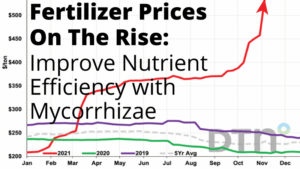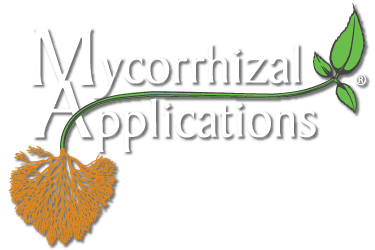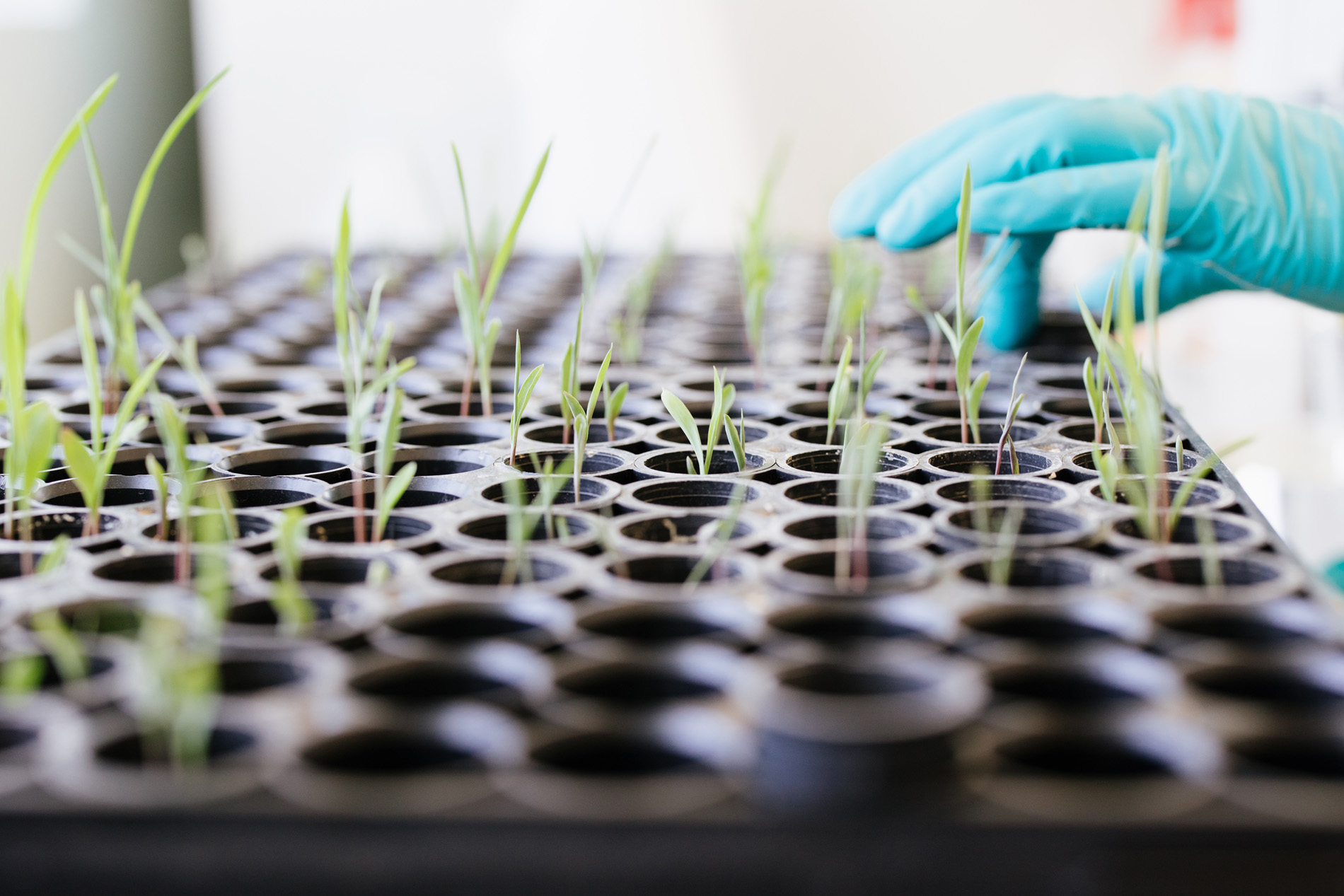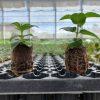
“Insane Fertilizer Prices”, was the headline in a recent industry newsletter. The price of fertilizer has gotten so bad, one of the world’s largest fertilizer manufacturers recently sent out a press release trying to explain the reasons for the rise in prices. These changes have caused greenhouse and nursery growers, landscapers, and turf managers to reevaluate their fertilizer usage and to develop plans to better manage the whole fertilization process.
Incorporating mycorrhizae into your production protocol is a simple low-cost tool to help reel fertilizer usage in, and in turn, reduce your costs. Plant nutrient absorption efficiency is increased when plants are grown with mycorrhizae. Mycorrhizae work to increase the root absorptive area of the plant, which in turn increases the uptake of water and nutrients by the plant. MycoApply customers have successfully reduced their fertilizer usage from 10-50 percent depending on the plant type, crop cycle, and previous fertilizer protocols.
This increase in root absorptive area is mainly achieved through the development of a network of mycorrhizal fungal hyphae. These hyphae are 1/10 the size of root hairs and can extend up to 20-25 inches beyond the normal root depletion zone in an established plant. And within the normal root depletion zone, mycorrhizal fungal hyphae are able to access many areas that would not be accessible by roots and root hairs alone. Nutrient absorption occurs along the entire length of the hyphae as opposed to just the tips of the root hairs. And finally, the rate of nutrient inflow to the plant is greater with mycorrhizal fungal hyphae compared with root hairs.
Nutrient uptake is increased in several ways. Mycorrhizae produce enzymes that convert unobtainable nutrients into bioavailable forms the plant can readily use. The production of solubilizing enzymes is produced by mycorrhizae to unlock insoluble minerals and transfer them into a soluble form. In fact, mycorrhizae are the team leaders with other microorganisms in accomplishing this amazing task. As a reminder, some of the more important insoluble/immobile nutrients include the ammonium ion, phosphorous in all forms, magnesium, copper, iron, and zinc.
An additional vulnerability for a plant being efficient at nutrient uptake is nutrient leaching. This leaching is often thought of as only happening when you overfertilize. However, nutrient leaching occurs when either the plant root system or the soil is not able to capture and use/hold the level of nutrients that are applied through fertilization. This is often the case with very mobile nutrients including the nitrate ion, potassium, sulfur, boron, chlorine, magnesium, and molybdenum. In fact, the nitrate ion is often leached via gas from the soil as opposed to the commonly thought of leaching in liquid form.
But wait there is more, mycorrhizae work to increase nutrient availability over a wider range of soil pH. All of these mechanisms I have outlined above make it so the plant can absorb nutrients both above and below their normal availability ranges. This gives growers a buffer to still produce top-quality plants even if they struggle to always control their soil pH within the desired range. This benefit can be a game-changer for growers that are either having to grow in a growing media outside their desired pH range or who are constantly battling the impacts of water quality on their soil pH.
Before I give you some fertilizer recommendations, I want to reemphasize the fact that the plant drives the relationship with mycorrhizae. When the plant needs the functional benefits the mycorrhizae can provide, the plant will turn on the mycorrhizae that it has developed a symbiotic relationship with. When growers overfertilize, causing nutrients to come into overabundance, the plant will put forth no effort to establish the symbiosis or turn on established symbiotic links, since it can access all it needs and expend less energy by accessing the nutrient available through the fertilization. Growers that use a lean fertilization production protocol produce plants that are exposed to some stress. The procedure encourages plants to develop their symbiotic relationship with mycorrhizae and use these symbiotic links to achieve the functional benefits they need to combat the stress. We all know that once plants leave a greenhouse or nursery, the level of stress they are exposed to increases, so the sooner mycorrhizae can be introduced to the plant the sooner the plant can use it to combat stress, including becoming more efficient at nutrient uptake.
When it comes to fertilizer recommendations we suggest growers use low phosphorus and a high percentage of nitrate-nitrogen fertilizer. Instead of using the long-time industry standard of 20-20-20 fertilizer, consider using a 20-10-20 fertilizer, or even better a 15-5-15 or 15-2-15 fertilizer. We also suggest reducing your nitrogen levels to below 200 ppm: with a preferred range of 100-150 ppm N. If you must apply a high phosphorus analysis fertilizer during production, then we suggest you apply it four or more weeks after the MycoApply application to avoid inhibiting the mycorrhizal symbiosis. Controlled release and organic forms of fertilizer can also be used with mycorrhizae. Since these forms are designed to, or naturally release their nutrients very slowly, and do not increase the water-soluble nutrients in the substrate excessively, they can be great partners for plants grown with mycorrhizae. These fertilizer types allow the mycorrhizae more time to be even more thorough and efficient in the uptake of nutrients.
Mycorrhizal plants have an increased root absorptive area that makes it possible for them to become more efficient in nutrient uptake. Without the support of mycorrhizae, fertilizer users (growers, landscapers, and turf managers) are more exposed to the perils of the international fertilizer market and the plants they manage are more vulnerable to stress, including nutrient accessibility. Let’s hope as you reevaluate your fertilizer usage, you will carefully consider the value mycorrhizae can provide you and your plants.
If you have any questions about anything covered in this article or MycoApply Mycorrhizae, please contact your local Mycorrhizal Applications Representative or call 866-476-7800 or email us at inquiries@mycorrhizae.com.







